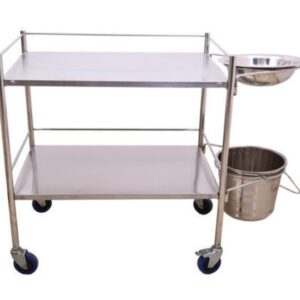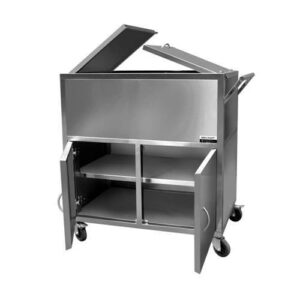Some common features of a crash cart in stainless steel may include a large work surface for easy access to supplies, multiple drawers for organization, and sturdy wheels for mobility. It may also have built-in power outlets for electrical equipment.
Specifications:
- Material: The frame of the trolley is made of high-quality stainless steel which is durable and rust-resistant.
- Dimensions: The dimensions of the trolley depend on its purpose, but in general, it should be large enough to hold all necessary medical equipment and small enough to easily maneuver around tight spaces. Typical dimensions are around 40 inches in height, 30 inches in width, and 20 inches in depth.
- Weight capacity: The trolley should be able to support a significant amount of weight, usually around 200-300 pounds.
- Casters: The trolley should have four large, durable casters that can be locked to prevent movement when the trolley is stationary. The casters should also be able to easily swivel for smooth and easy maneuverability.
- Drawers: The trolley should have several drawers, typically around three to six, that can easily be opened and closed. The drawers should be able to hold various medical supplies and equipment.
- Shelves: The trolley should have at least one or two shelves that can be adjusted to different heights. These shelves can be used to hold larger medical equipment or supplies.
- Handles: The trolley should have sturdy handles on both sides to make it easy to move the trolley around the hospital.
- Bumpers: The trolley should have protective bumpers on all four corners to prevent damage to walls and doors while moving the trolley around.
- Optional accessories: Some optional accessories that can be added to the trolley include a defibrillator shelf, a sharps container holder, and a built-in power strip.



















Reviews
There are no reviews yet.